Table of Contents
Carla Bley: The Top 25 pearls in Jazz history
One of the finest and most productive of all female jazz instrumentalists, bandleaders and composers is Carla Bley. From her sprawling jazz opera Escalator Over The Hill to her arrangements for Charlie Haden’s Liberation Music Orchestra, and from her Big Carla Bley Band to her trio with saxophonist Andy Sheppard and bassist Steve Swallow, she has made her mark on all sizes of composition and ensemble. This ten-piece band toured in the 1980s and catches her iconoclastic reworking of gospel and big band jazz.
Carla Bley: a life in Music
Best Sheet Music download from our Library.
Carla Bley (born Lovella May Borg, May 11, 1936) is an American jazz composer, pianist, organist and bandleader. An important figure in the free jazz movement of the 1960s, she is perhaps best known for her jazz opera Escalator over the Hill (released as a triple LP set), as well as a book of compositions that have been performed by many other artists, including Gary Burton, Jimmy Giuffre, George Russell, Art Farmer, John Scofield and her ex-husband Paul Bley.
Every jazz fan knows the name of Carla Bley, but her relentless productivity and constant reinvention can make it difficult to grasp her contribution to music. I began listening to her in high school when I was enamored with the pianist Paul Bley, whose seminal nineteen-sixties LPs were filled with Carla Bley compositions. (The two were married.) My small home-town library also had a copy of “The Carla Bley Band: European Tour 1977,” a superb disk of rowdy horn soloists carousing through instantly memorable Bley compositions and arrangements. Some pieces change you forever. The deadly serious yet hilarious “Spangled Banner Minor and Other Patriotic Songs,” from that 1977 recording, celebrates and defaces several nationalistic themes, beginning with the American national anthem recast as Beethoven’s “Appassionata” Sonata. From the first notes onward, I was never quite the same again.
The novelist and musician Wesley Stace has a similar story: “Aged sixteen, and full only of rock and pop music, I came upon Carla Bley by chance through a Pink Floyd solo project, Nick Mason’s ‘Fictitious Sports,’ which I only bought because the vocals were by my favorite singer, Robert Wyatt, once of Soft Machine. It’s a Carla Bley album in all but name: her songs embellished with brilliant and witty arrangements. I wanted to hear more. ‘Social Studies’ (also from 1981) thus became the first jazz album I ever bought, opening up a whole world I knew nothing about. ‘Utviklingssang’ is perfect, all gorgeous melody and abstraction, no words required. She’s everything I want from instrumental music.”

In the last half decade, many of Bley’s remaining peers from the early years have died: Paul Bley, Charlie Haden, Roswell Rudd, Ornette Coleman, Paul Motian. At eighty-two, Bley is still composing and practicing the piano every day. But it also felt like it was high time to rent a car, visit a hero, and try to get a few stories on the official record.
Bley and her partner, the celebrated bassist Steve Swallow (and another living link to the revolutionary years of jazz) live in an upstate compound tucked away near Willow, New York. When I drove up, Bley and Swallow were just coming back from their daily walk through the woodland. Their lawn boasts an old oak tree and a massive chain-link dinosaur made by Steve Heller at Fabulous Furniture, in nearby Boiceville.
The home offers enough room for two powerful artists and their personal libraries, not to mention striking paintings by Dorothée Mariano and Bill Beckman. Bley’s upstairs study is stocked with hundreds of her scores and an upright piano, on which she played me her latest opus, a sour ballad a bit in the Monk tradition, with just enough unusual crinkling in the corners to prevent it from being too square. When we sat down to talk, Bley proved to be witty and surreal, just like her music. (Swallow is the house barista and fact checker.)
Bley’s early development as an independent spirit is well documented in the excellent 2011 book “Carla Bley,” by Amy C. Beal. I began a little further along, and asked her about Count Basie in the late nineteen-fifties. “Count Basie was playing at Birdland, Basin Street, and the Jazz Gallery when I was working as a cigarette girl,” she said. “I got to hear him more than anyone else, and it was an education.” Basie is still her favorite pianist: “He’s the final arbiter of how to play two notes. The distance and volume between two notes is always perfect.”
At the end of the decade, her husband, an associate of Charles Mingus, Ornette Coleman, and Sonny Rollins, wanted to play more as a trio pianist but lacked material. One day Paul Bley came to Carla and said, “I need six tunes by tomorrow night.” There’s an obvious thread of European classical music in early Bley compositions, and this fit perfectly with the sixties jazz avant-garde. Ornette Coleman’s “Lonely Woman” is closer to a Mahler dirge than to Duke Ellington; Charles Mingus gave a deconstructed blues composition the European-style catalogue number “Folk Forms No. 1.” Many of Bley’s own pieces from that era have atonal gestures and abstract titles like “Ictus” and “Syndrome.”
Among the many musicians listening carefully was Keith Jarrett, who told me that Paul Bley was, “Sort of like Ahmad with certain kinds of drugs.” Ahmad Jamal’s biggest hit was the D-major dance “Poinciana,” a bland old standard given immortality by Jamal’s rich jazz harmony and the drummer Vernel Fournier’s fresh take on a New Orleans second-line beat. Paul Bley’s recordings of Carla’s famous melody “Ida Lupino” have a G-major dance with a new kind of surreal perspective. When comparing “Poinciana” and “Ida Lupino” back to back, Jarrett’s comment—“certain kinds of drugs”—makes sense.
However, while Ahmad Jamal had to use plenty of imagination when rescoring “Poinciana,” Paul Bley just needed to get the paper from his wife and read it down: Bley’s piano score of “Ida Lupino,” with inner voices and canonic echoes, is complete. Like many jazzers, I first heard of the film-noir icon Ida Lupino thanks to Bley’s indelible theme. I finally got to ask her about the title. “I just saw a few movies she did, and I thought she was sort of stripped and basic,” Bley said. “She didn’t have all the sex appeal that a female star should have. She was sort of serious. Maybe I felt a bond with her for that reason. I wanted to be serious. It wasn’t anything to do with her being the first female director. I learned that later.”
Another significant early Bley work is “Jesus Maria,” first recorded by Jimmy Giuffre with Paul Bley and Steve Swallow for Verve, in 1961. Among the listeners inspired by this trio was Manfred Eicher, who reissued these recordings for ECM, in 1990. The reissue leads off with the rather classical “Jesus Maria,” where the pretty notes seem to suspend in the air, suggesting the famous “ECM sound” several years before the label was founded. I asked Eicher about Bley’s early compositions and he said, “There are so many of them, each as well crafted as pieces by Satie or Mompou—or Thelonious Monk for that matter. Carla belongs in that tradition of radical originality.”
Bley was a radical, but she also sought structure. She told me about the early-sixties avant-garde: “In free playing, everybody played as loud as they could and as fast as they could and as high as they could. I liked them, but there was also what Max Gordon said about a bunch of guys screaming their heads off: ‘Call the pound.’ I think the music needed a setting. Just as it was, I thought free jazz needed work.”
Please, subscribe to our Library.
If you are already a subscriber, please, check our NEW SCORES’ page every month for new sheet music. THANK YOU!
A key turned in the lock when Bley heard the roiling, church-inspired experimental tenor saxophonist Albert Ayler, who she says was, “Maudlin! Maudlin in the most wonderful way. He gave me license to play something that was really corny and love it.” Another watershed was “Sgt. Pepper’s Lonely Hearts Club Band” by the Beatles, a suite of songs that form a bigger picture. “An artist friend of mine came over one day with this album,” Bley told me. “He said, ‘Jazz is dead. All the artists are listening to this. We don’t listen to jazz anymore. This is it.’ ”
Carla Bley Big Band – Festival de Jazz de Paris 1988
Track List
00:00:09 – Song of the eternal waiting of canute 00:10:24 – The girl who cried champagne – I 00:18:05 – The girl who cried champagne – II 00:21:50 – The girl who cried champagne – III 00:29:29 – Real life hits 00:40:53 – Fleur carnivore 00:52:48 – Lo ultimo 01:00:51 – end credits
Personnel
Carla Bley – piano
Christof Lauer – saxophone-soprano
Wolfgang Puschnig – saxophone-alto Andy Sheppard – saxophone-tenor
Roberto Ottini – saxophone-baryton
Lew Soloff – trompette
Jens Winter – trompette
Gary Valente – trombone
Frank Lacy – cor
Bob Stewart – tuba
Daniel Beaussier – oboe, flute
Karen Mantler – orgue
Steve Swallow – bass
Buddy Williams – batterie
Don Alias – percussions
Browse in the Library:
| Artist or Composer / Score name | Cover | List of Contents |
|---|---|---|
| A dozen A Day Book 1 Technical exercises for the piano |
 |
A dozen A Day Book 1 Technical exercises for the piano |
| A dozen A Day Book 2 Technical exercises for the piano |
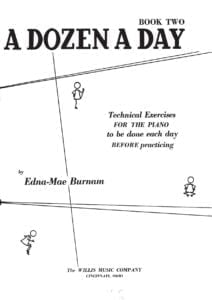 |
|
| A dozen A Day Book 3 Technical exercises for the piano |
 |
|
| A dozen A Day Book 4 Technical exercises for the piano |
 |
|
| A dozen A Day Mini Book Technical exercises for the piano |
 |
|
| A dozen Day Preparatory Book Technical exercises for the piano |
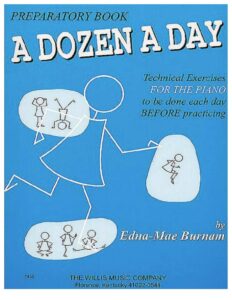 |
|
| A Farewell To Arms Love Theme From A Farewell To Arms film by Mario Nascimbene Francis Webster 1957 |
 |
|
| A Felicidade (Antonio Carlos Jobim) | ||
| A Festival Gathering Of Carols (Musescore File).mscz | ||
| A Fine Frenzy – Almost Lover |
 |
|
| A Fistful of Dollars (Ennio Morricone) | ||
| A Generative Theory Of Tonal Music by Fred Lerdahl and Ray Jackendoff (Book) |
 |
|
| A Guide To Guitar Chords by Curt Sheller |
 |
A Guide To Guitar Chords by Curt Sheller |
| A Guide To Musical Analysis by Nicholas Cook (Book) |
 |
|
| A Handbook Of Piano Playing (By Eric Hope) (1962) |
 |
|
| A Heart Full Of Love (Musescore File).mscz | ||
| A love suicide (Yutaka Minobe) | ||
| A Love Supreme (by Ashley Kahn) The story of john Coltrane’s signature album (Book) |
 |
|
| A Media Luz (Edgardo Donato) | ||
| A Modern Approach To Jazz Rock And Fusion For Guitar with Tablature |
 |
A Modern Approach To Jazz Rock And Fusion For Guitar |
| A Modern Method For Guitar (Berklee) 1 by William Leavitt |
 |
A Modern Method Berklee 1 |
| A Modern Method For Guitar (Berklee) 2 by William Leavitt |
 |
A Modern Method For Guitar (Berklee) 2 |
| A Modern Method For Guitar (Berklee) 3 by William Leavitt |
 |
A Modern Method For Guitar (Berklee) 3 |
| A MOZART REINCARNATED (Ennio Morricone) |
 |
|
| A Mozart Reincarnated by Ennio Morricone (Musescore File).mscz | ||
| A New Approach To Ear Training by Leo Kraft (BOOK) |
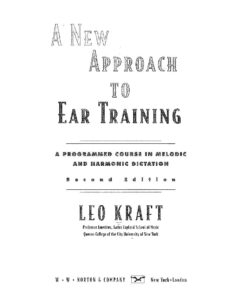 |
|
| A New Approach To Piano Technique (By Ruth A. Dickerson) (1962) |
 |
A new approach to piano technique |
| A Night In Tunisia – Dizzy Gillespie.mscz | ||
| A Pedal Method For The Piano (By Albert F Venino) (1893) |
 |
|
| A Popular Account Of Ancient Musical Instruments And Their Development by William Lynd (Book 1897) |
 |
|
| A Rockin’ Christmas Piano Vocal Guitar |
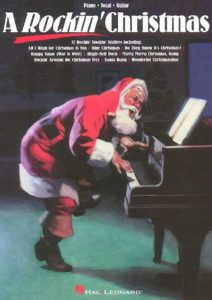 |
A Rockin’ Christmas Piano Vocal Guitar Contents — Rockin Christmas |
| A Single Man – George’s Waltz (Shigeru Umebayashi) | ||
| A Single Man – Stillness of the Mind (Abel Korzeniowski) | ||
| A Smooth Jazz Christmas – Mellow Seasonal Favorites for Piano arr. Roger House |
 |
A Smooth Jazz Christmas – Mellow Seasonal Favorites for Piano arr. Roger House |
| A Song For You – Leon Russell Ray Charles (Musescore File).mscz | ||
| A Star Is Born – Always Remember Us This Way Lady Gaga |
 |
|
| A Star Is Born – Shallow Lady Lady Gaga |
 |
|
| A Tale Of Two Sisters Ost – Epilogue Piano Solo |
 |
|
| A Thousand Years – Twilight OST (Christina Perri) | ||
| A Time For Love – Johnny Mandel |
 |
|
| A Time For Us – Guitar TABlature |
 |
|
| A Time For Us (Love Theme from Romeo and Juliet) Nino Rota |
 |
|
| A Time For Us (Romeo and Juliet OST) Nino Rota | ||
| A Touch Of Jazz 14 well-known hymns, gospel songs and contemporary praise songs by Wolaver Bill |
 |
A Touch Of Jazz 14 well-known hymns, gospel songs and contemporary praise songs by Wolaver Bill |
| A Tribute To Ella Fitzgerald Piano Vocal Guitar |
 |
A tribute to ELLA FITZGERALD |
| A Walk To Remember – Only Hope | ||
| A whiter shade of pale – Procul Harum | A whiter shade of pale – Procul Harum | |
| AaRON U-turn Lili Piano |
 |
|
| Ab Ovo – Joep Beving (Musescore File).mscz | ||
| Abba – Abba Gold – Greatest Hits |
 |
ABBA Gold Geatest Hits booksong sheet music |
| Abba – Chiquitita | ||
| Abba – Dancing Queen | ||
| Abba – Fernando | ||
| Abba – I Have A Dream | ||
| Abba – Like An Angel Passing Through My Room | ||
| Abba – Mamma Mia | ||
| Abba – Slipping Through My Fingers | ||
| Abba – Thank You For The Music | Abba-Thank-You-For-The-Music 1st page | |
| ABBA – Thank You For The Music (Piano Vocal Guitar) | ABBA – Thank You For The Music (Piano Vocal Guitar) | |
| ABBA – Thank You For the Music (Piano vocal Guitar) (Musescore File).mscz | ||
| Abba – Thank You For The Music Piano & vocal | Abba – Thank You For The Music-abba-satb | |
| Abba – The Winner Takes It All | ||
| ABBA Dancing Queen Easy Piano Solo |
 |
|
| ABBA Fernando (Piano Solo arr.) |
 |
|
| ABBA Fernando (Piano Solo arr.).mscz | ||
| ABBA Greatest Hits |
 |
ABBA GREATEST HITS SHEET MUSIC BOOK |
| ABBA I Have A Dream |
 |
|
| Abba The Very Best Vol 1 Easy Piano Hans Gunter Heumann Pop Classics For Piano |
 |
Abba The Very Best Vol 1 Easy Piano |
| Abba The Very Best Vol 2 Easy Piano Hans Gunter Heumann Pop Classics For Piano |
 |
Abba The Very Best Vol 2 Easy Piano |
| Abbey Lincoln Songbook |
 |
Abbey Lincoln Songbook |
| Abbey Lincoln Songbook Piano Vocal Guitar Chords |
 |
Abbey Lincoln Songbook Piano Vocal Guitar Chords |
| Abdullah Ibrahim – The Piano World Of |
 |
Abdullah Ibrahim, The Piano World Of |
| Abdullah Ibrahim The African Piano Of Abdullah Ibrahim Vol 1 |
 |
Abdullah Ibrahim The African Piano Of Abdullah Ibrahim Vol 1 |
| Abdullah Ibrahim The Wedding (piano solo transcription sheet music, partition) |
 |
|
| Abel Korzeniowski – Death Is My Heir (from Romeo and Juliet) |
 |
|
| ABRSM Jazz Piano Pieces Grade 1 to 5 |
 |
ABRSM Jazz Piano Pieces Grade 1 to 5 ABRSM Jazz Piano Pieces Grade 5ABRSM Jazz Piano Pieces Grade 5 |
| ABRSM Piano Exam Pieces Grade 1 (2016) |
 |
ABRSM Piano Exam Pieces Grade 1 (2016) |
| ABRSM Piano Scales, Arpeggios Grade 8 |
 |
|
| ABRSM Piano Scales, Arpeggios and broken chords Grade 1 |
 |
|
| ABRSM Piano Scales, Arpeggios and broken chords Grade 4 |
 |
ABRSM Piano Scales, Arpeggios and broken chords Grade 4 |
| ABRSM Piano Scales, Grade 2 A Guide for Students and Teachers | ABRSM Piano Scales, Grade 2 A Guide for Students and Teachers | |
| ABRSM – Time pieces for guitar vol. 1 |
 |
|
| ABRSM – Time pieces for guitar vol. 2 |
 |
|
| ABRSM 2017 18 Piano Exam Pieces Grade 1 |
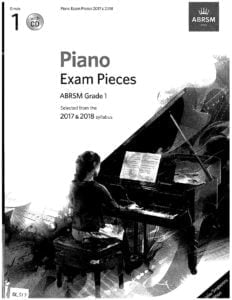 |
ABRSM 2017 18 Piano Exam Pieces Grade 1 |
| ABRSM 2017 18 Piano Exam Pieces Grade 2 |
 |
ABRSM 2017 18 Piano Exam Pieces Grade 2 |
| ABRSM 2017 18 Piano Exam Pieces Grade 3 |
 |
|
| ABRSM 2017 18 Piano Exam Pieces Grade 4 |
 |
|
| ABRSM 2017 18 Piano Exam Pieces Grade 5 |
 |
|
| ABRSM 2017 18 Piano Exam Pieces Grade 6 |
 |
|
| ABRSM 2017 18 Piano Exam Pieces Grade 7 |
 |
|
| ABRSM 2017 18 Piano Exam Pieces Grade 8 |
 |
|
| ABRSM 2021-2022 Piano Exam Pieces Grade 1 |
 |
|
| ABRSM 2021-2022 Piano Exam Pieces Grade 2 |
 |
|
| ABRSM 2021-2022 Piano Exam Pieces Grade 3 |
 |
|
| ABRSM 2021-2022 Piano Exam Pieces Grade 5 |
 |
|
| ABRSM 2021-2022 Piano Exam Pieces Grade 6 |
 |
|
| ABRSM 2021-2022 Piano Exam Pieces Grade 8 |
 |
|
| ABRSM 2021-2022 Piano Exam Pieces Initial Grade |
 |
ABRSM 2021-2022 Piano Exam Pieces Initial Grade |
| ABRSM Aural Training In Practice Book 1 Grades 1 to 3 |
 |
|
| ABRSM Aural Training In Practice Book 2 Grades 4 and 5 |
 |
|
| ABRSM Discovering Music Theory (Complete) Grades 1 to 5 Workbook by Simon Rushby (2020 Exams) |
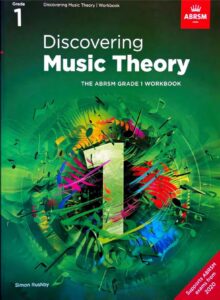 |
ABRSM Discovering Music Theory (Complete) Grades 1 to 5 Workbook by Simon Rushby (2020 Exams) contents |
| ABRSM Erster Verlust Grade 4 ABRSM Piano Exam Pieces 2021 & 2022 |
 |
|
| ABRSM Etude In A Minor – Dmitry Kabalevsky ABRSM Grade 4 Piano Exam Pieces 2021 & 2022 |
 |
|
| ABRSM Grade 2 – Inter-City Stomp byChristopher Norton From Microjazz Collection (Sheet Music) |
 |
|
| ABRSM Initial Grade Piano Exam Pieces 2023 2024 |
 |
|
| ABRSM Minuet and Trio D 41 No 21 – Franz Schubert ABRSM Grade 4 Piano Exam Pieces 2021 & 2022 |
 |
|
| ABRSM More Music Theory Sample Papers Grade 5 For New Format |
 |
|
| ABRSM Music Theory In Practice, Grade 1 (Eric Taylor) |
 |
|
| ABRSM Music Theory In Practice, Grade 2 (Eric Taylor) |
 |
|
| ABRSM Music Theory Past Papers Grade 1 2004 |
 |
|
| ABRSM Music Theory Past Papers Grade 4 2016 |
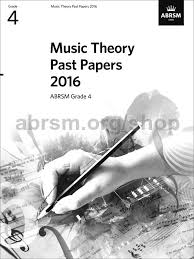 |
|
| ABRSM Music Theory Past Papers Grade 5 2012 |
 |
|
| ABRSM Music Theory Past Papers Grade 6 2013 |
 |
|
| ABRSM Nikki Iles Danny Boy ABRSM Piano Exam Grade 8 2023 Jazz Piano arr. inspired by Bill Evans |
 |
|
| ABRSM Nikki Iles Friends Book 1 Intermediate Jazz Pieces For Piano |
 |
ABRSM Nikki Iles Friends Book 1 Intermediate Jazz Pieces For Piano |
| ABRSM Nikki Iles Friends Book 2 Intermediate To Advanced Jazz Pieces For Piano |
 |
ABRSM Nikki Iles Friends Book 2 Intermediate To Advanced Jazz Pieces For Piano |
| ABRSM Nikki Iles The Elephant Parade ABRSM piano Exam |
 |
|
| ABRSM Piano 2025-2026 Grade 8 C3 A Nightingale Sang in Berkeley Square by Sherwin – Maschwitz |
 |
|
| ABRSM Piano Exam 2007-2008 Grade 3 |
 |
|
| ABRSM Piano Exam 2015-16 Grade 3 |
 |
ABRSM Piano Exam 2015-16 Grade 3 |
